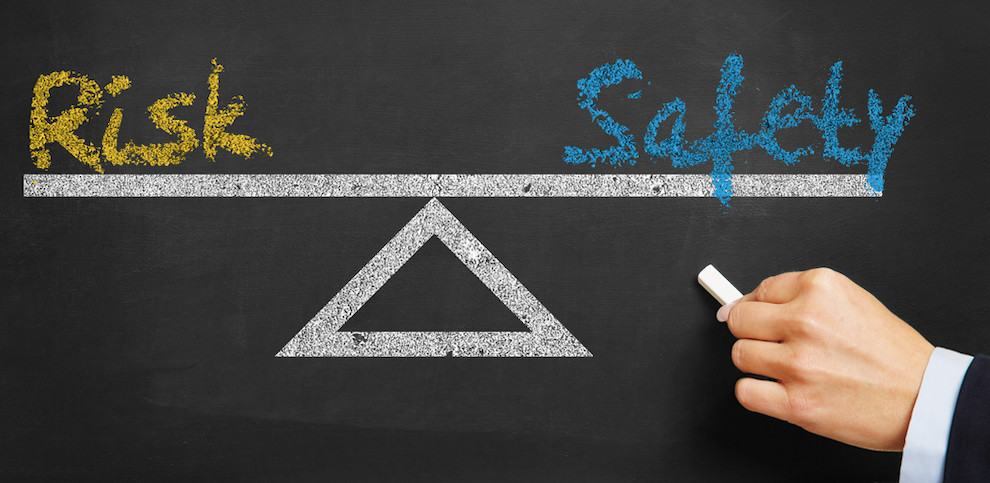In an increasingly complex and interconnected world, too many risk and safety teams continue to function with siloed data, systems, processes and operations.
Without cohesion between risk management and safety teams, organizations miss out on a single source of truth that enables fully informed risk management decision-making for all parties.
Public entities that use different technology systems for their risk and safety groups or rely on manual processes experience resounding impacts: Risk managers are left in the dark as to how safety programs are affecting their total cost of risk (TCOR), and safety managers struggle with proving that their initiatives have tangible, measurable benefits.
True strategic risk management requires collaboration between risk and safety teams, seamless data integration, and a unified, core system to power it all. This can be achieved with an Integrated Risk Management (IRM) approach.
3 Steps to Integrated Risk Management Implementation
An IRM approach is based on an acknowledgment that an organization’s risks are inherently interconnected, and that one incident can have a snowball effect that impacts the entire organization.
For example, risk managers benefit from safety initiatives that result in fewer workplace incidents, claims and ultimately a lower TCOR. Similarly, safety managers gain evidence-based data that illustrates the positive financial outcomes of their initiatives to gain stakeholder buy-in and further investment.
An IRM strategy brings the two teams together to proactively implement risk mitigation across all departments. To eliminate silos and consolidate claims and policy data, an IRM strategy will proactively identify and report on interconnected risks that require unified responses.
There’s no one-size-fits-all approach to IRM. Instead, your strategy will be based on how your organization operates and functions across risk management, safety and compliance. These three steps will serve as a baseline guiding IRM adoption:
A strong commitment from all stakeholders is crucial for an IRM strategy to take hold.
Foster leadership buy-in by aligning IRM goals with projected financial outcomes. This is, of course, one of the greatest challenges to any organization when it comes to IRM adoption. As with any change management initiative, leadership support will frame the entire implementation for all teammates.
- Assess data availability and the culture of risk across your organization. IRM spans departments and functions, so it’s imperative to get a clear picture of where your organization is generating useful data and where pertinent details are missing. Assess your cultural strengths and weaknesses and seek out opportunities to support a more risk-aware culture wherever you can.
- Consider how to manage the project and be clear about your objectives and intended results. IRM is only successful when it is adopted and practiced by everyone involved, so make sure the responsibility for outcomes is shared across departments to help promote collaboration. Commit to clear, timely communications when there are new developments or changes to IRM-related policies and procedures.
Once you’ve solidified the strategy, you’ll need to shift gears to implementation. Agile risk and safety management technology is necessary for supporting your IRM approach. Ask yourself: Is our current risk and safety technology up to the challenge?
Comprehensive, organization-wide risk mitigation is a hefty undertaking that requires a significant investment of time and resources. Implementing an IRM strategy has lots of moving parts. Take it one step at a time and elicit support from software experts who can help your organization achieve its goals with the right technology.
IRM Benefits: Fewer Claims and Strengthened Partnerships
The value gained by organizations that adopt an IRM approach is immense. A successfully implemented IRM strategy results in:
- Fewer incidents and injuries
- Avoidance and reduction in claims costs and potential litigation
- Strengthened partnerships with brokers and agents that can lead to negotiating lower premiums
- Improved workflows, metrics and trend reports to support your team’s efficiency and decision making
Public sector risk managers can make more informed decisions with a deeper understanding of the big picture around risk and safety. Ultimately, they are better equipped to allocate resources, prioritize risk efforts, proactively mitigate future risks, ensure regulatory compliance, promote health and safety, and reduce TCOR.
The IRM system’s interconnectedness compounds its value. Triumphs in one area of the organization can now flow to others — problems are identified sooner and prevented from muddying the rest of the organization’s waters.
Once you decide to make the leap to integrated risk management, stay the course. You’ll soon reap the benefits that an IRM approach has to offer.
*The views and opinions expressed in the Public Risk Management Association (PRIMA) blogs are those of each respective author. The views and opinions do not necessarily reflect the official policy or position of PRIMA.*

By: Michael Fix
Sales Associate, Government Practice, Origami Risk
Michael is an experienced sales professional and valued member of the government and public entity practice at Origami Risk. Since joining Origami in 2020, Michael has leveraged a consultative approach to better understand public entities' and government agencies' unique needs while delivering tailored recommendations for risk and safety management technology solutions. He is dedicated to fostering long-term relationships and sharing his experience helping others in their risk and safety modernization journey.



